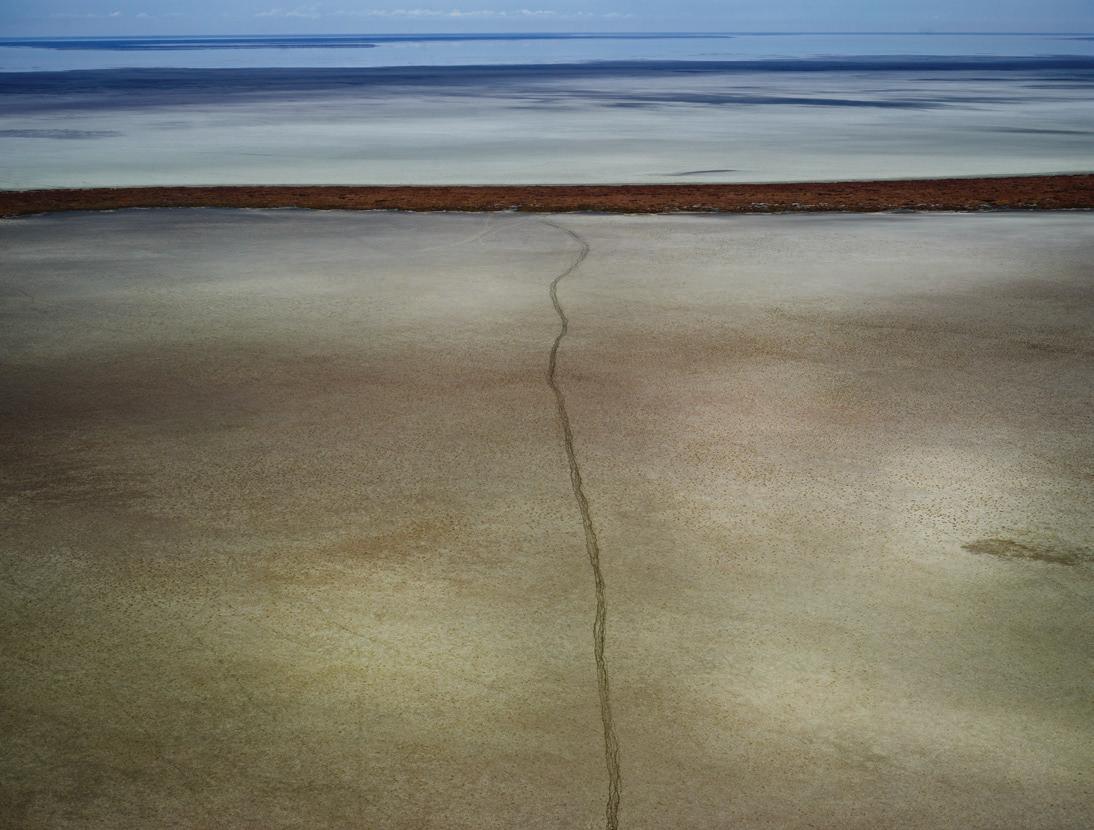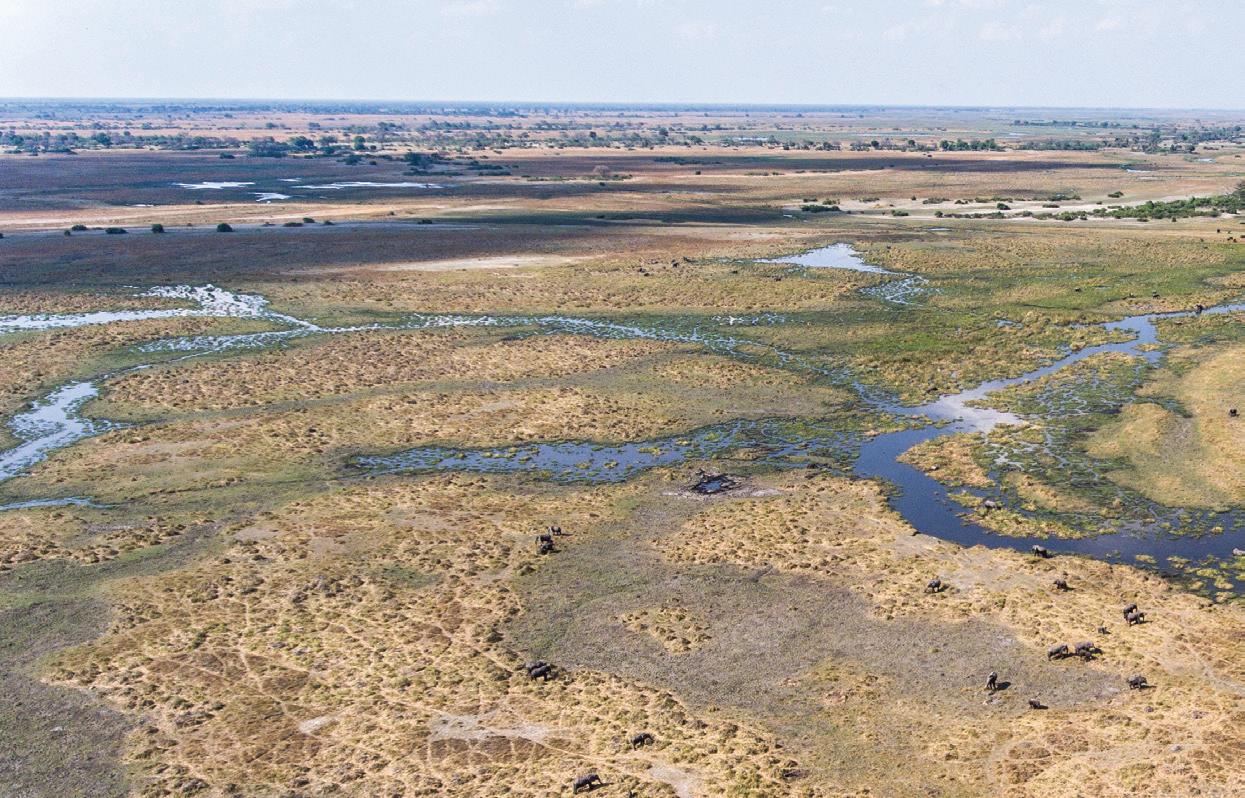
6 minute read
FLYWESTAIR TAKES YOU THERE
More than just a flight
On a Flywestair you don’t simply travel from one airport to the next. We take you on a special journey 20,000 feet up in the air for the ultimate bird’s eye view of the land. Namibia is a vast country with spectacular vistas and natural treasures. Flying across the different geological formations, mountains, rivers and plains on our scheduled flights, or in any direction on a charter, the landscape presents unexpected perspectives from take-off to landing – no matter where you go. Our journey is part of your destination.

Paul van Schalkwyk
After taking off from Eros Airport in Windhoek, which lies in a valley surrounded by mountains, in the heart of the central plateau we turn southwest over the Khomas Hochland, the Naukluft Mountains and over the escarpment down to the vast plains of the Namib and the red dunes. Look out for the Fairy Circles in the apple green grass after the rains or the golden grass in the dry season. Even in the driest times you will notice them as the plane circles to touch down at Sesriem. Take note of the mountains carved by rivers from the highlands which eventually end in the sea of sand. One such place is the famous Sossusvlei.

Paul van Schalkwyk

Paul van Schalkwyk
Carved in the sand
Taking off from Windhoek to the south, the valley gives way to an expansive plain from which only Brukkaros rises. This geological oddity was formed by a gas explosion in a volcanic vent. On a clear day you cannot miss the massive ring mountain on the horizon.
Shortly after passing Keetmanshoop, you will see the Fish River Canyon.

Elzanne McCulloch
Small wonder it is considered the biggest in Africa. Especially since its only contender for that status has since been flooded by a dam. You will know why the Fish River Canyon tops the list if you have the good fortune to fly over it. In the early morning sun or golden afternoon light the formation is dramatic from any perspective. This photograph gives you an idea of its magnitude once you spot the people standing on the rim of the canyon. And that is just the beginning of its splendour.
Sea of Sand
Whether you take a flight from Oranjemund or from Cape Town to Walvis Bay or when you fly over the Namib Desert from a lodge anywhere in the south to the coast, you will realise why the landscape is referred to as the Namib Sand Sea. It’s sand as far as the eye can see. And the higher the aircraft climbs, the more the spectacular vastness seems to increase.
When you have the privilege to land in or depart from Lüderitz, take a long look at the ocean. There is no sea as blue as the Atlantic Ocean at Lüderitz on a clear sunny day. Can it be due to the icy water or the rocky coastline? Or the total lack of clouds in an unpolluted sky? Whatever the reason, you will notice a change as you travel north.
And you cannot fail to spot the most iconic feature on the coastline between Lüderitz and the Orange River: Bogenfels. The dramatic photograph pictured here was taken from a different angle, a view which is only possible through the window of a plane. That is weather permitting, before the fog rolls in and forces the pilot to fly higher and more inland. Namibia is a land of contrast and unexpected diversions.

Paul van Schalkwyk
Don’t miss life far below
One of the most satisfying flying experiences in Namibia is along the coast, enjoying the ever-changing landscape where the land meets the ocean. Watching the breaking waves from a plane is mesmerising.
Namibia’s 1,500 km coastline is stunningly beautiful from above, especially where large colonies of seals congregate on the beach. At some places rocky outcrops reach into the ocean and up north, towards the Skeleton Coast near Cape Cross, the seal colonies stretch out for kilometres.
Don’t miss the large flocks of flamingos flying underneath on their way from Sandwich Harbour south of Walvis Bay, across the salt pans and still further northwards to breed in Etosha. The photograph on the opening page was taken over Sandwich Harbour.
Look for animal tracks Flying north on a scheduled flight from Windhoek to Ondangwa, the Etosha Pan should become clearly visible. No wonder: the white salt pan is one of the few features on the surface of the earth which can be seen from outer space. From no other vantage point than a plane are the colours on the pan and the graphic lines of animal tracks this visible. Of course the pilots have the best view from the cockpit, but looking straight down from your window seat when the sun rises on the early morning flight, the scene down below is simply fascinating.

Paul van Schalkwyk

Elzanne McCulloch

Elzanne McCulloch
Riverine wonderland
A flight to Rundu or Katima Mulilo, the two big towns on the north-eastern border of Namibia, is long and from 30,000 ft the scenery looks rather flat. The one recognisable feature on the way from Windhoek is the Waterberg. But once the aircraft descends the magic of the rivers and the floodplains become palpable. The Okavango and Zambezi rivers are perennial, two of only four such rivers, all of them along Namibia’s northern and southern borders. The northeast is also the greenest and most water-rich region of the country. From a chartered aircraft it is possible to identify elephants crossing the floodplains, leaving footpaths on the ground like graphic lines etched onto a painting.

Elzanne McCulloch
Rugged in perfect view Flying northwest to Damaraland and even further north to the Kunene River, the route leads over several identifiable mountain ranges, ephemeral rivers and the most famous recognisable inselberg, the Brandberg. The Ugab River meanders along its base and always shows some green patches, even in the dry season. In the photograph left, natural springs in the ephemeral Huab River provide sustenance for animals and moisture for trees during the dry winter months and even long cycles of drought. Follow the line formed by the reeds and bright green Salvadora bushes along the riverbed. Flying over Namibia’s northwest on a scenic flight provides the ideal opportunity to count the river courses north of Swakopmund. The first one is the Omaruru just north of Henties Bay, followed by the Ugab, the Huab, the Uniab, the Hoanib, the Hoarusib, the Khumib and finally the perennial Kunene River which forms the border between Namibia and Angola. If you are among the lucky ones, your scenic flight will take you all along the river inland to stay at one of the lodges on the river and explore Kaokoland from there.

Paul van Schalkwyk










